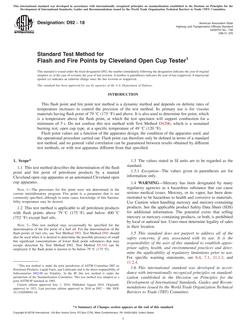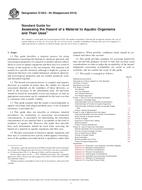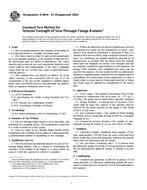1.1 These test methods cover the determination of ten major elements (SiO2, Al2O3, Fe2O3, MgO, CaO, Na2O, K2O, TiO2, P2O5, MnO, and LOI in ceramic whitewares clays and minerals using wavelength dispersive X-ray fluorescence spectrometry (WDXRF). The sample is first ignited, then fused with lithium tetraborate and the resultant glass disc is introduced into a wavelength dispersive X-ray spectrometer. The disc is irradiated with X-rays from an X-ray tube. X-ray photons emitted by the elements in the samples are counted and concentrations determined using previously prepared calibration standards. (1) In addition to 10 major elements, the method provides a gravimetric loss-on-ignition.
Note 1 – Much of the text of this test method is derived directly from Major element analysis by wavelength dispersive X-ray fluorescence spectrometry, included in Ref (1).
1.2 Interferences, with analysis by WDXRF, may result from mineralogical or other structural effects, line overlaps, and matrix effects. The structure of the sample, mineralogical or otherwise, is eliminated through fusion with a suitable flux. Fusion of the sample diminishes matrix effects and produces a stable, flat, homogeneous sample for presentation to the spectrometer. Selecting certain types of crystal monochromators eliminates many of the line overlaps and multiorder line interferences. A mathematical correction procedure (2) is used to correct for the absorption and enhancement matrix effects.
1.3 Concentrations of the elements in clays and minerals are determined independent of the oxidation state and are reported in the oxidation state in which they most commonly occur in the earth's crust.
Product Details
- Published:
- 10/01/2009
- Number of Pages:
- 5
- File Size:
- 1 file , 82 KB


